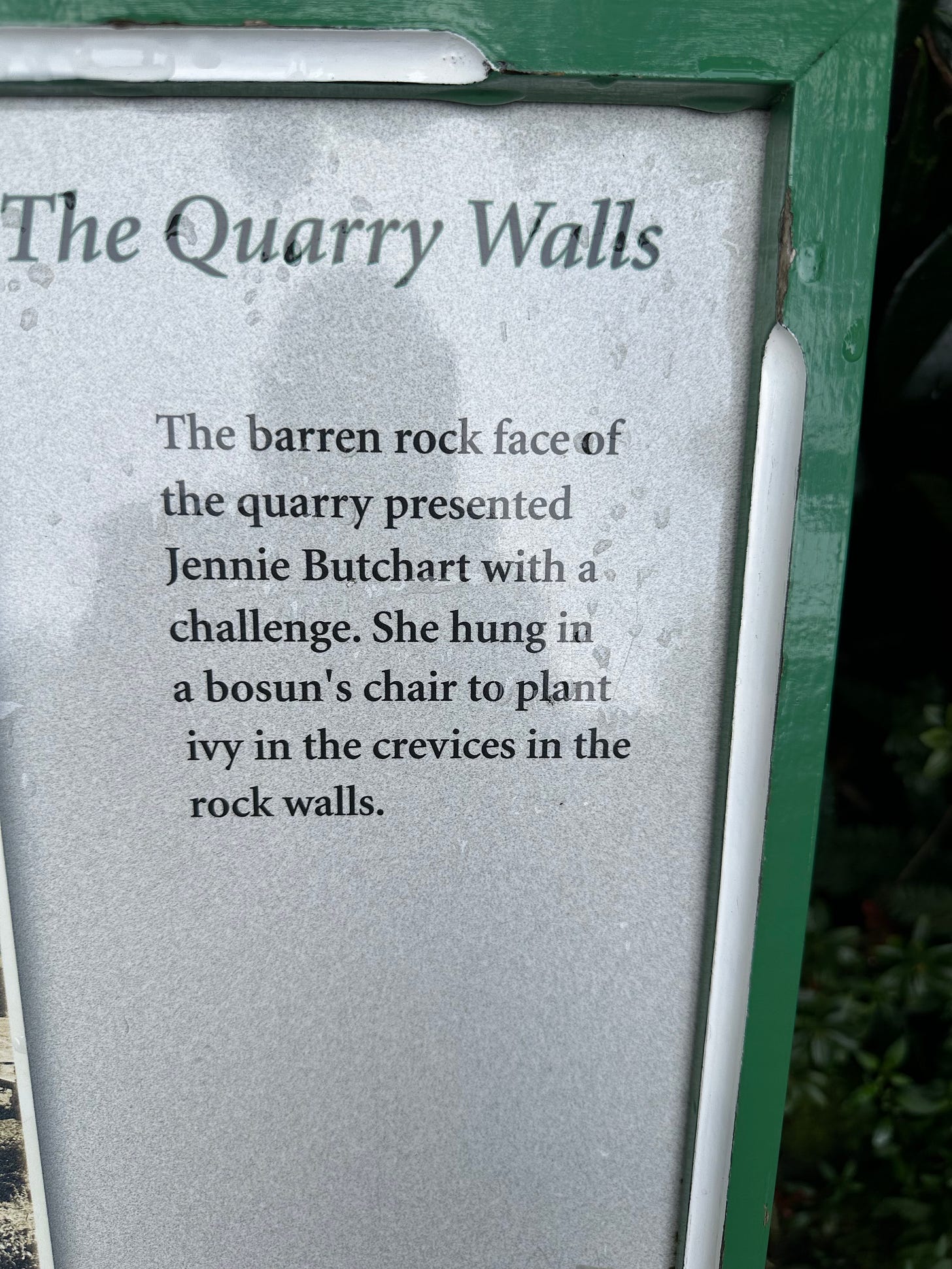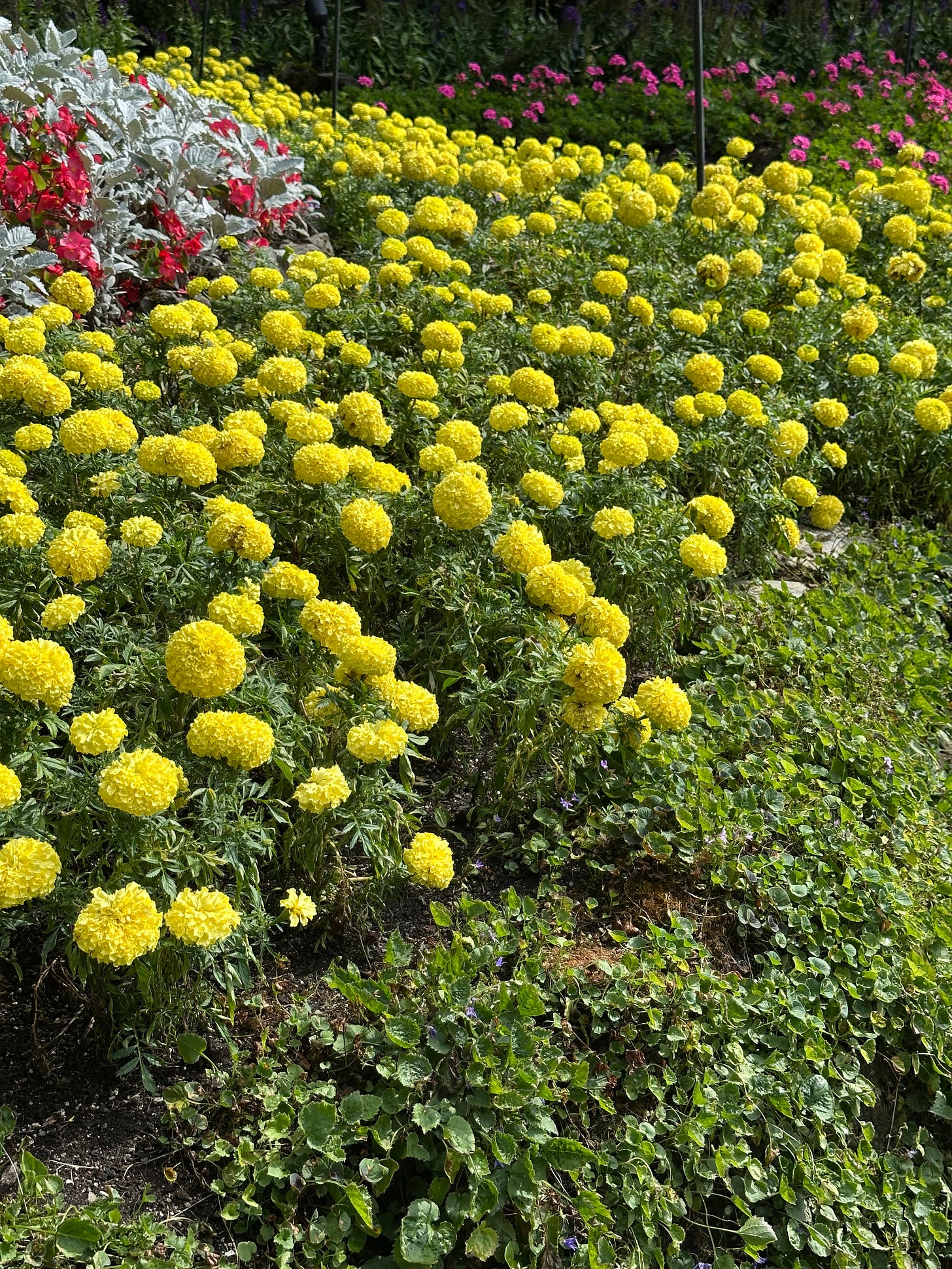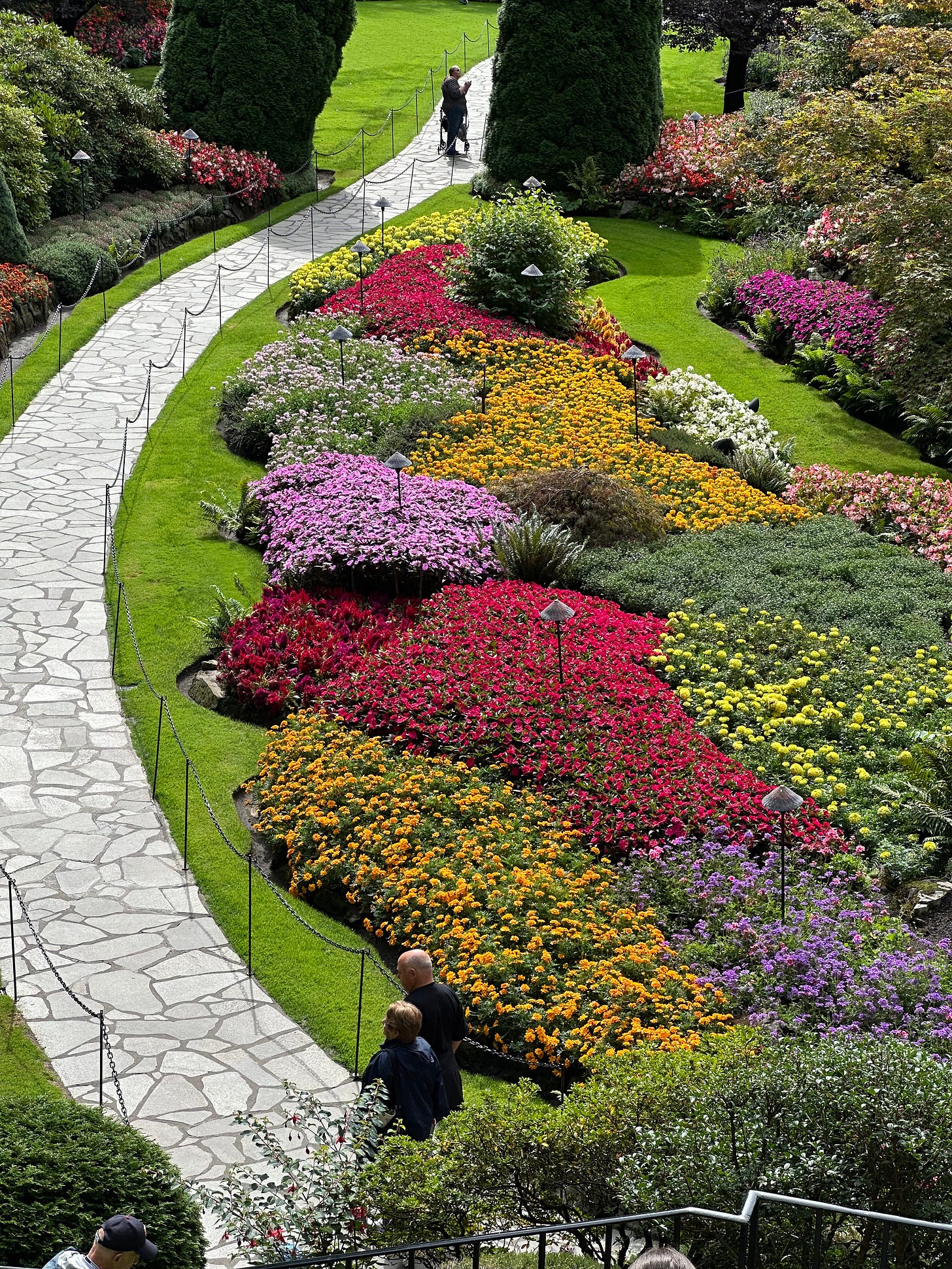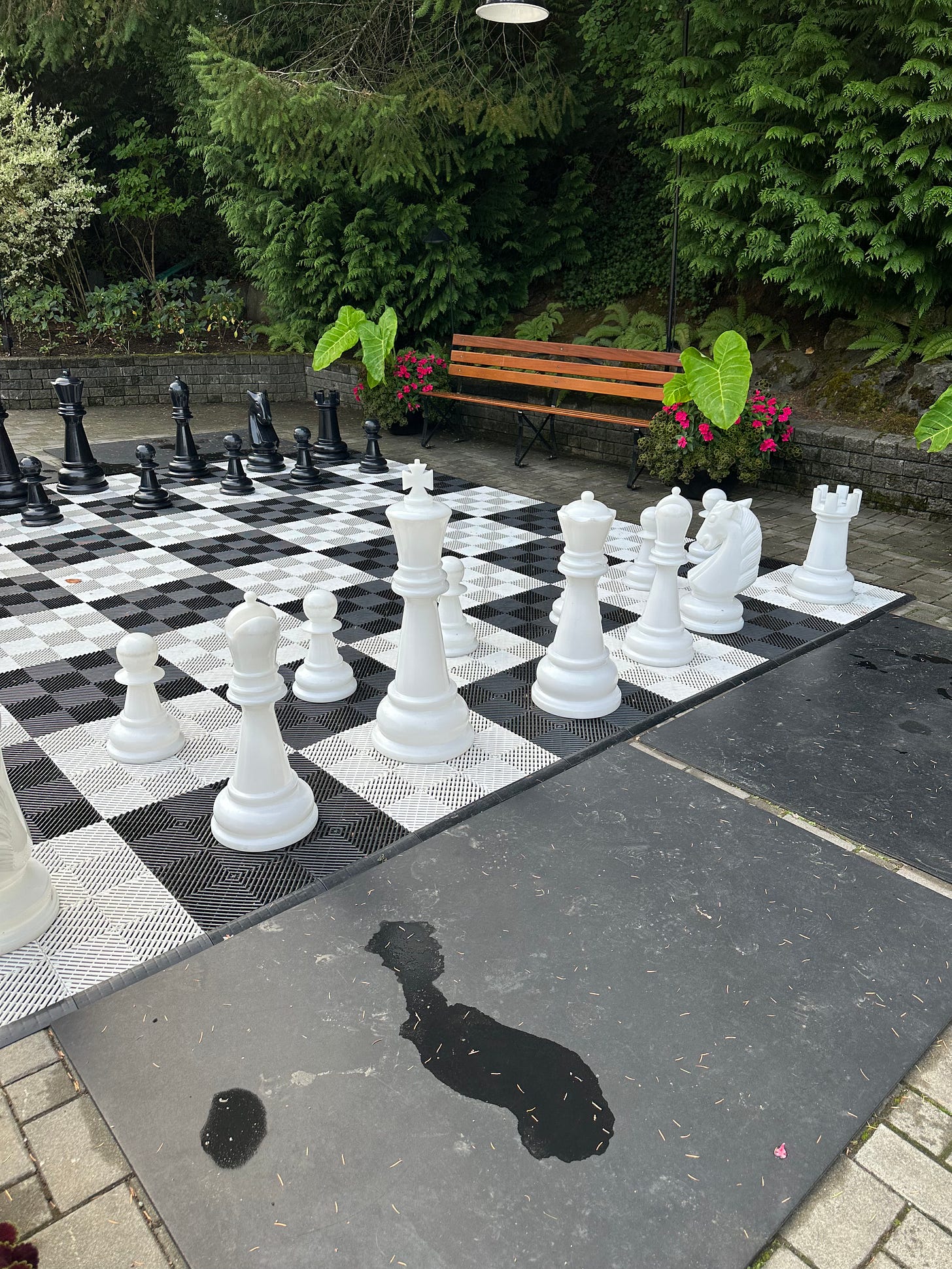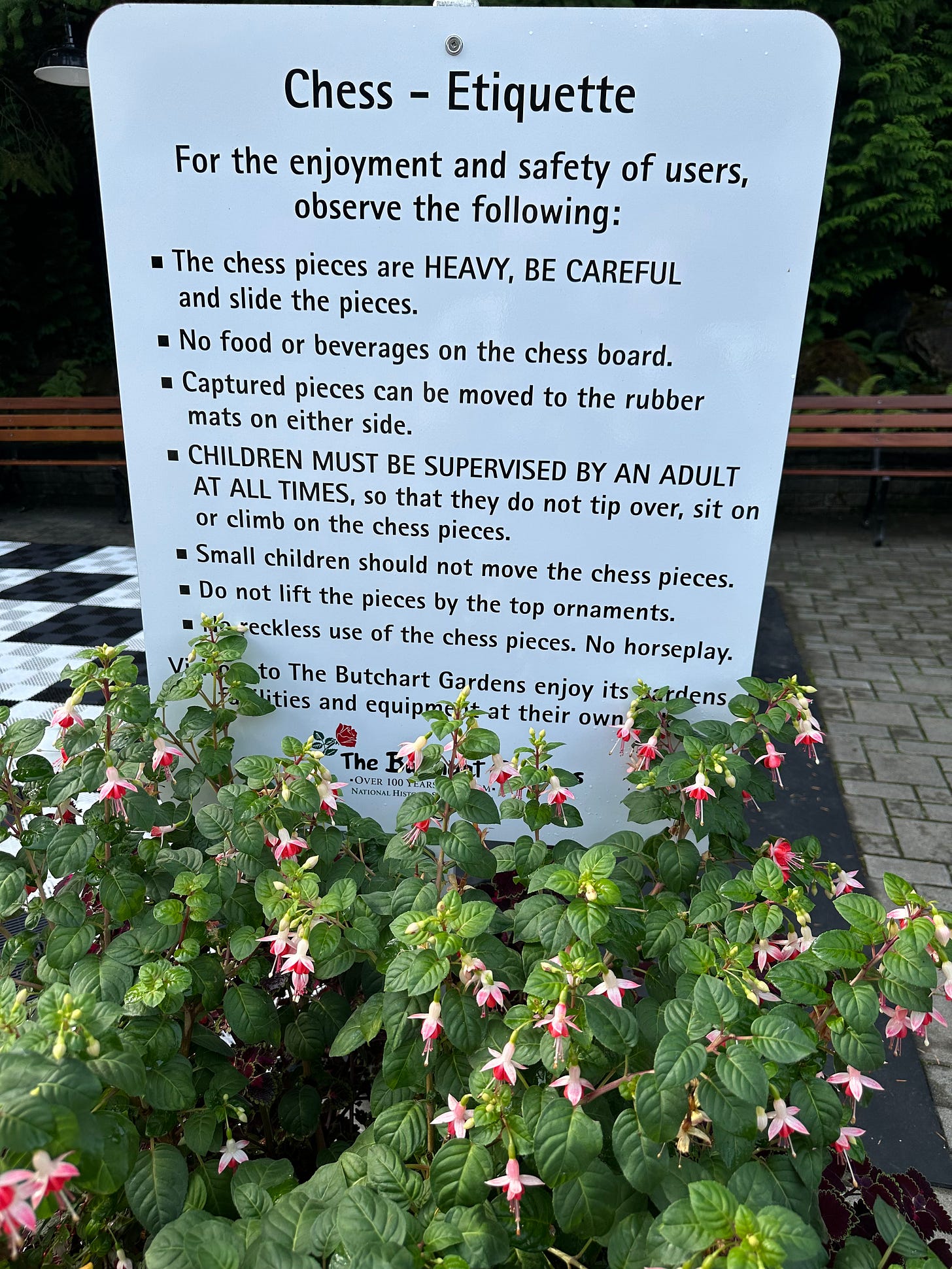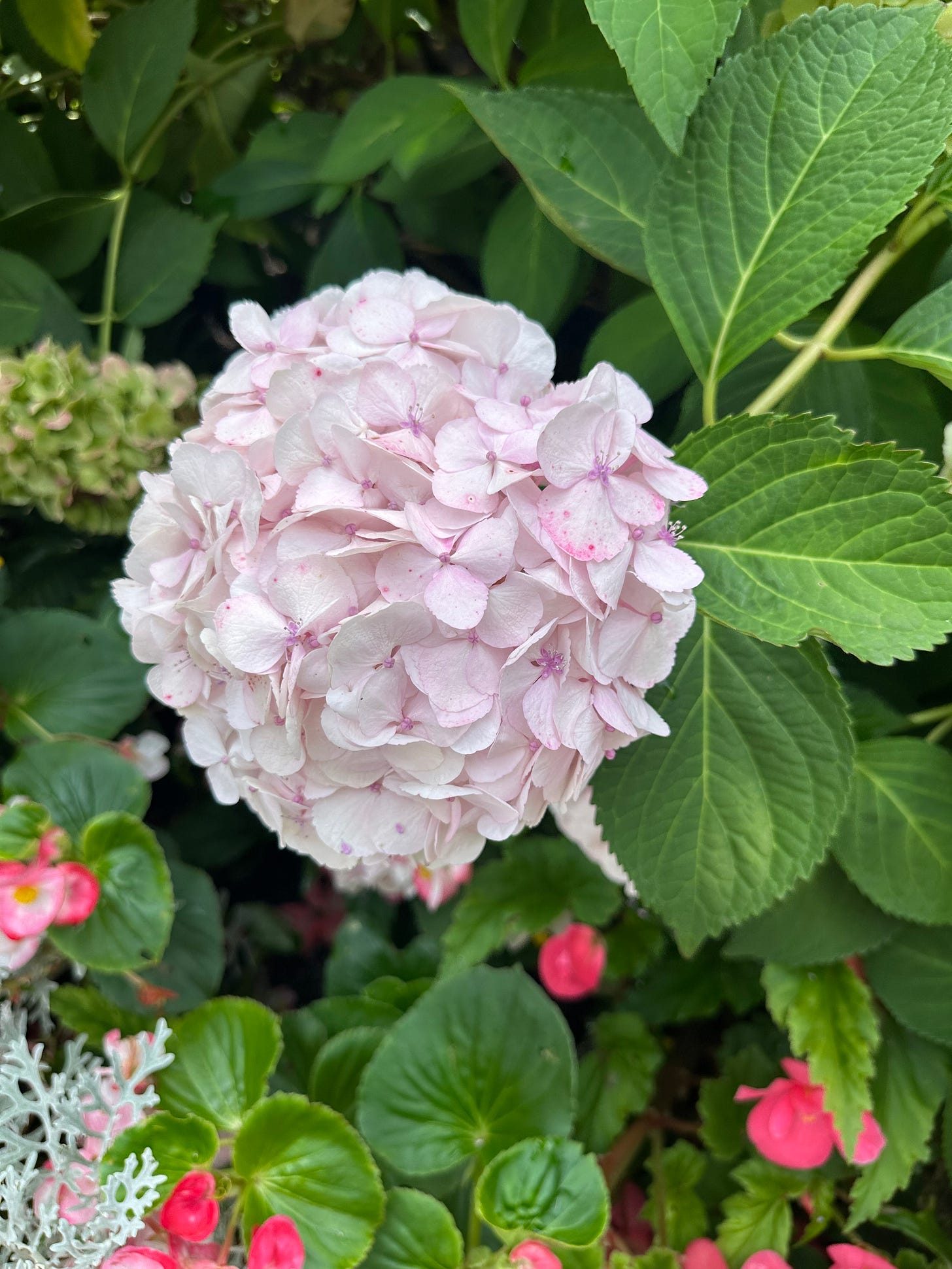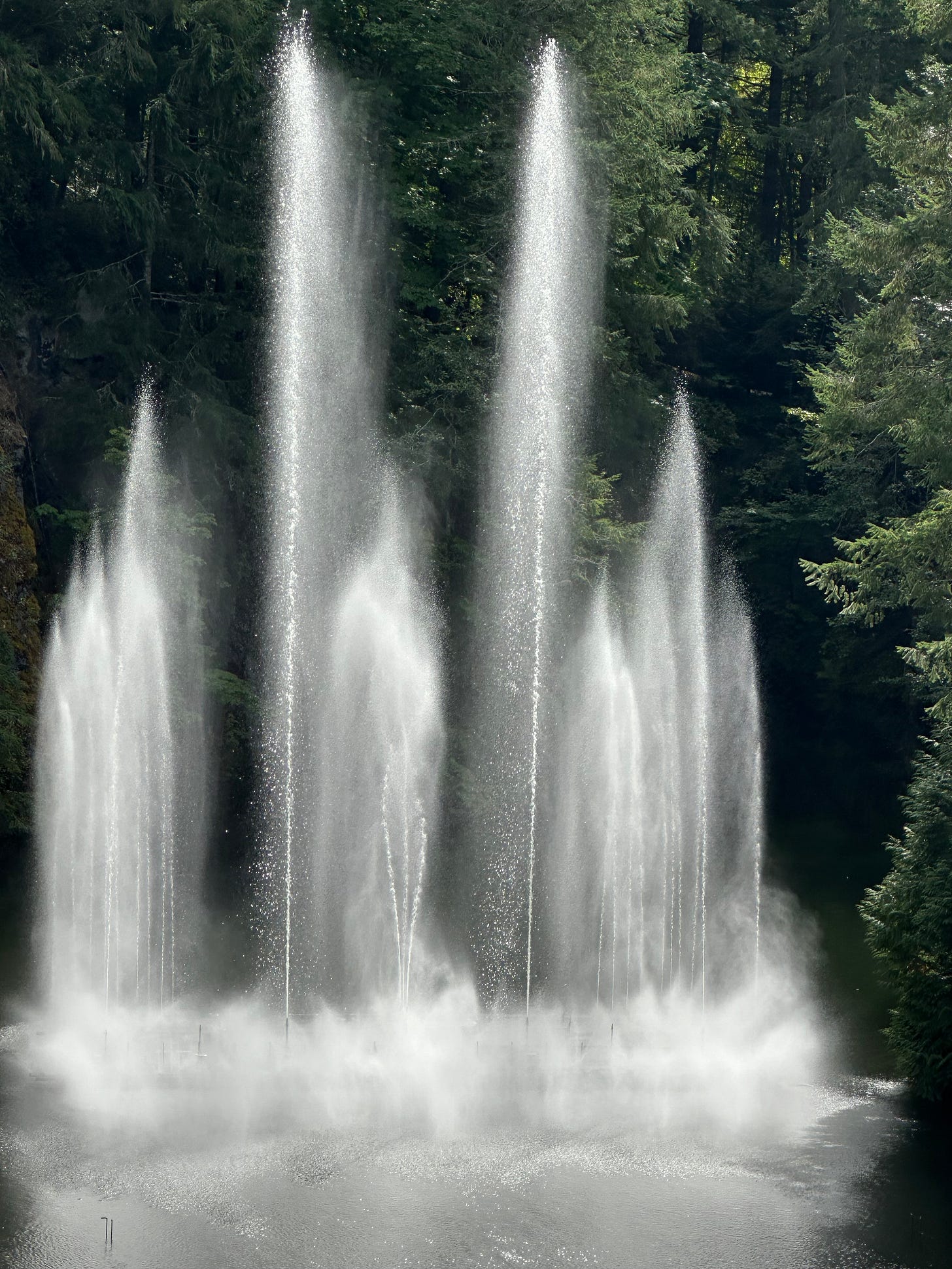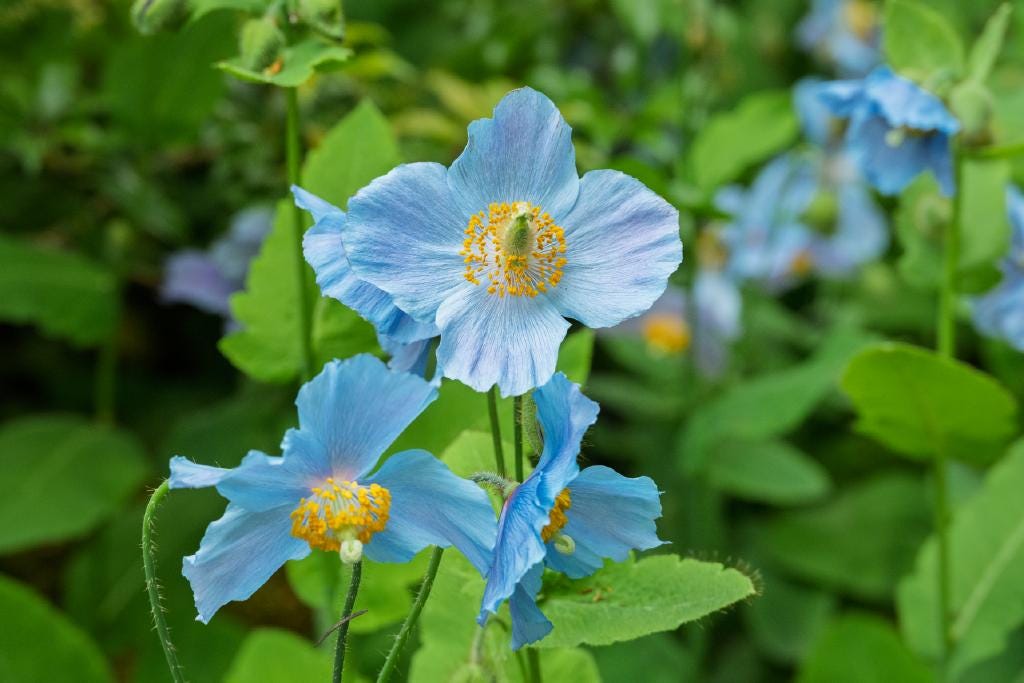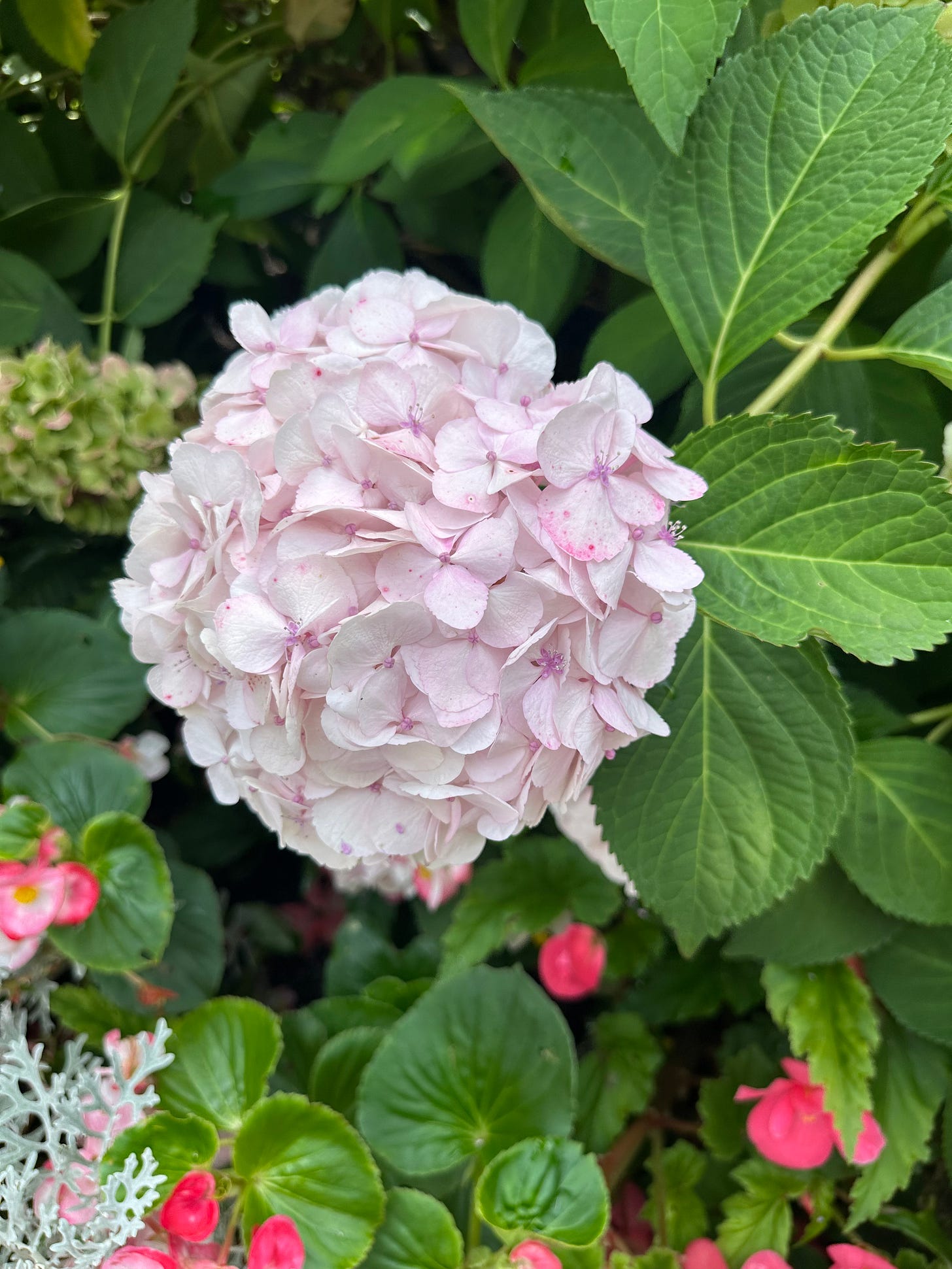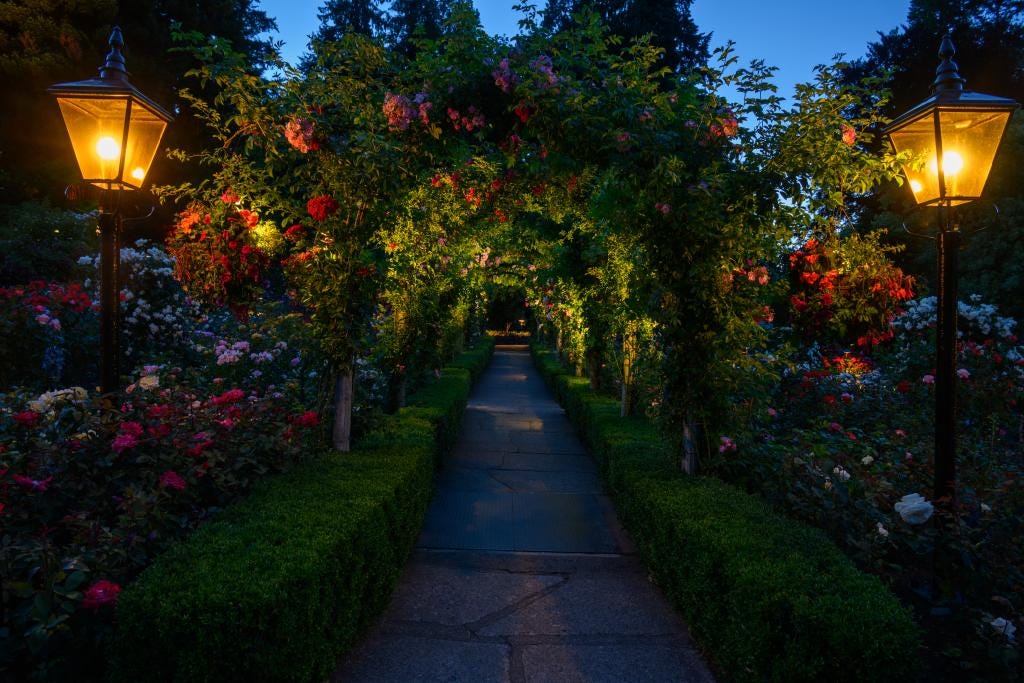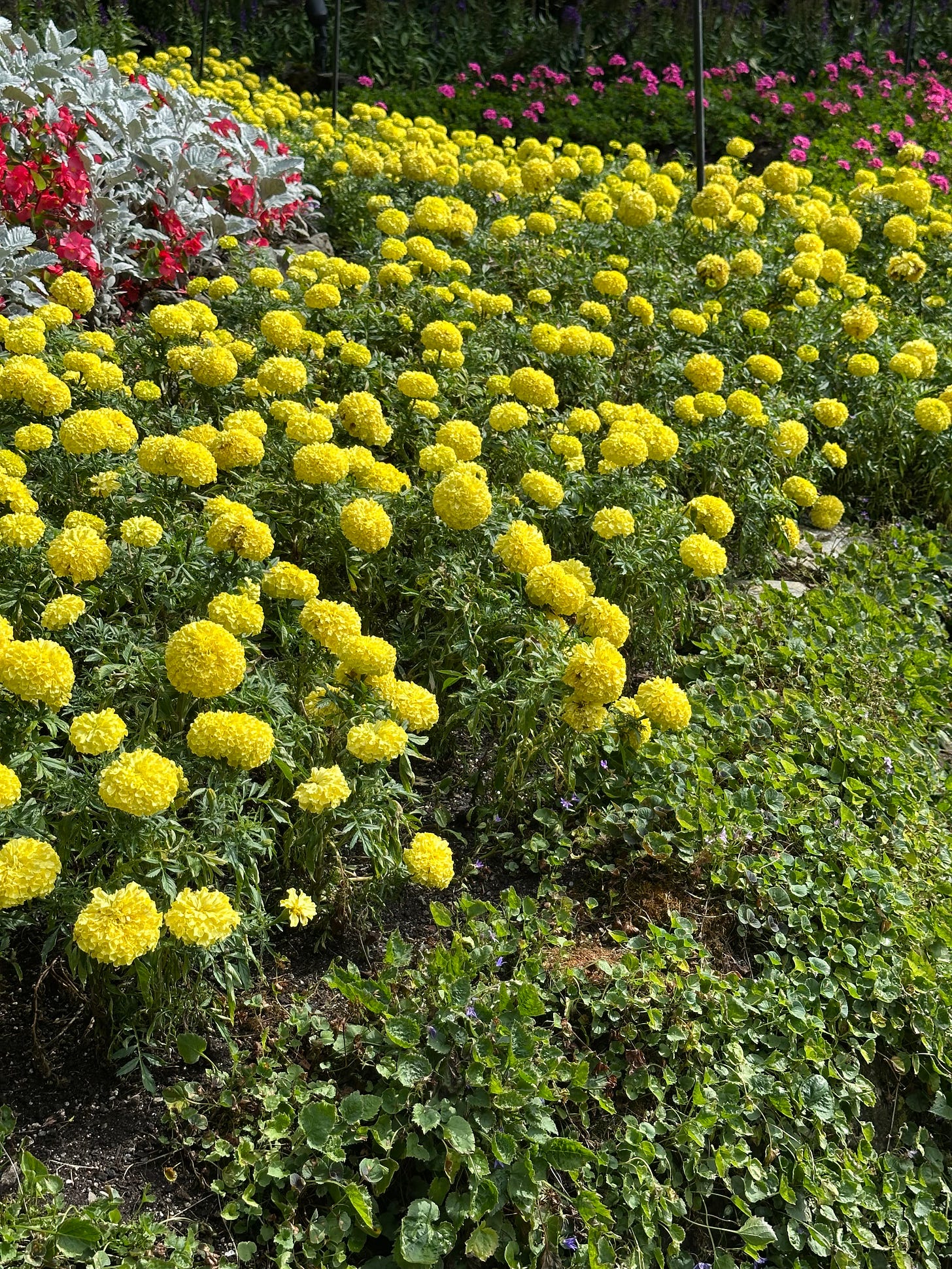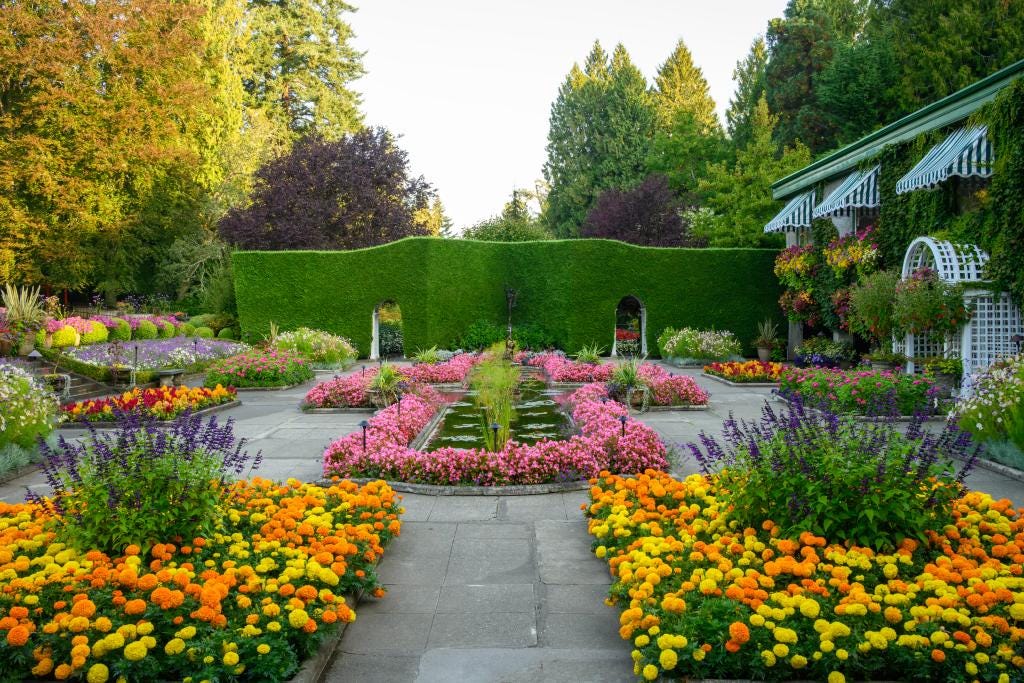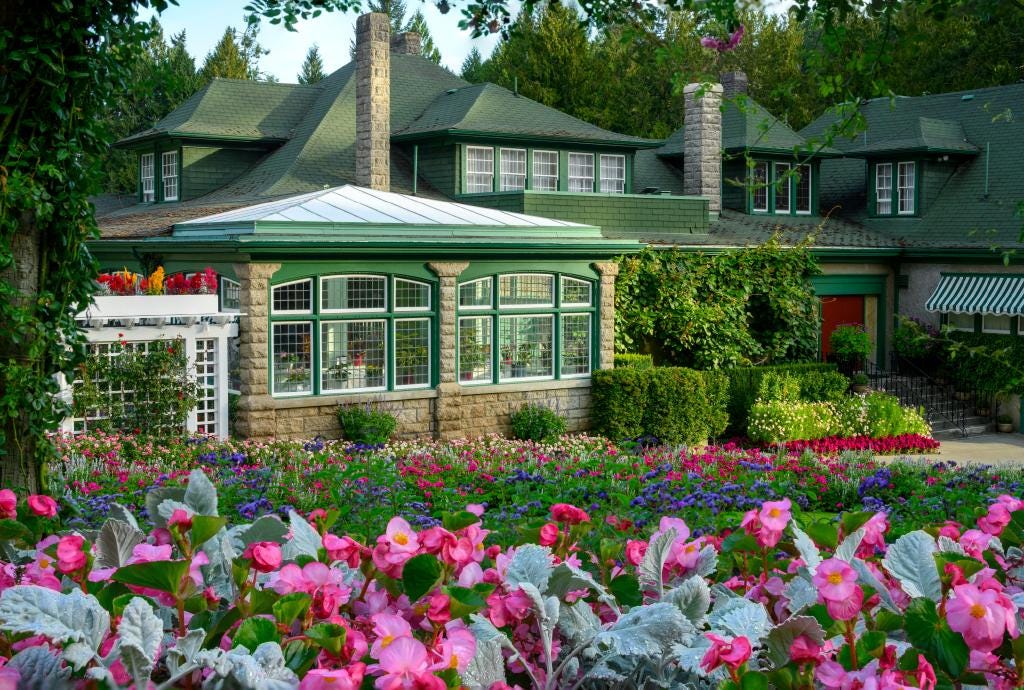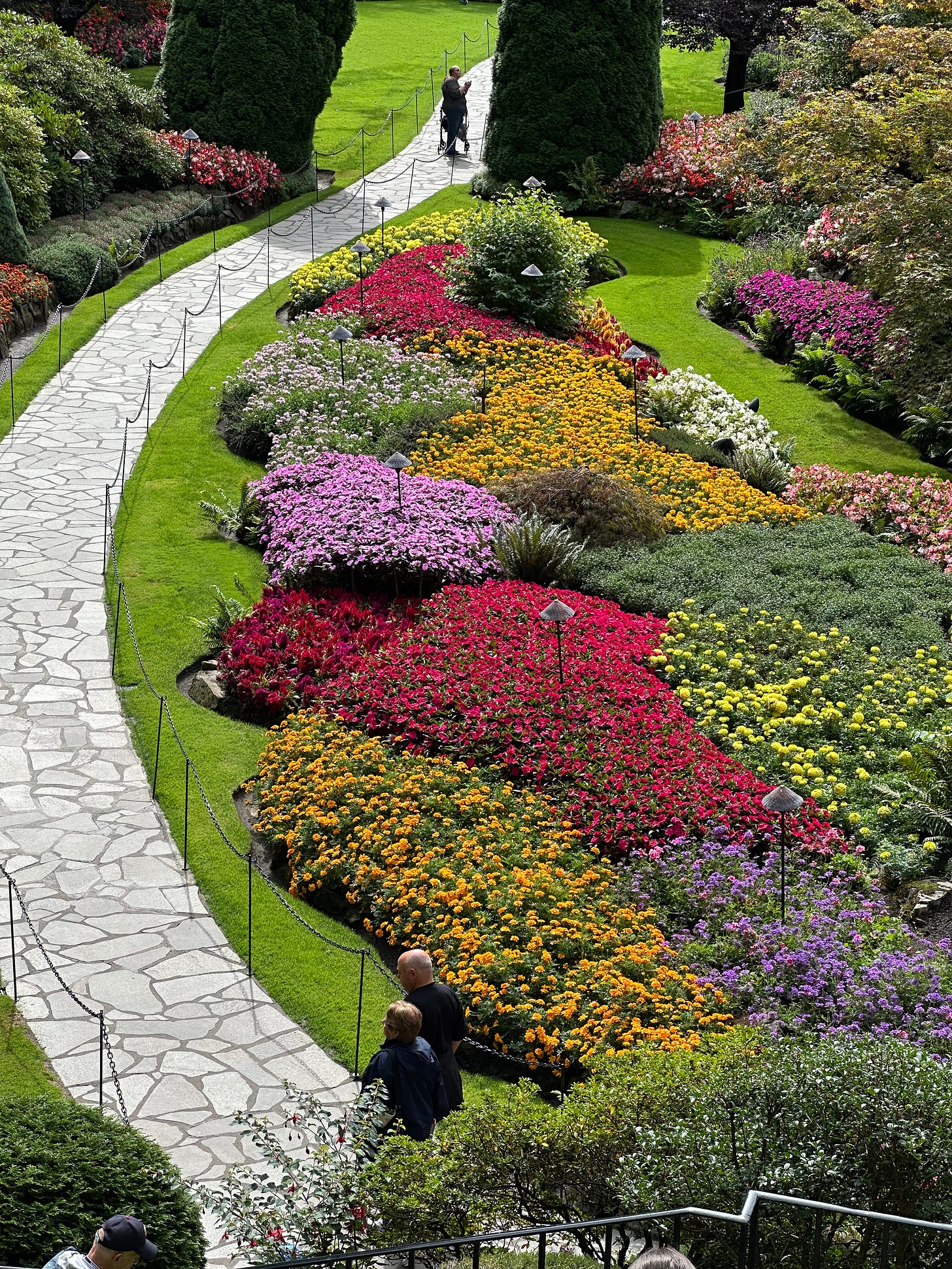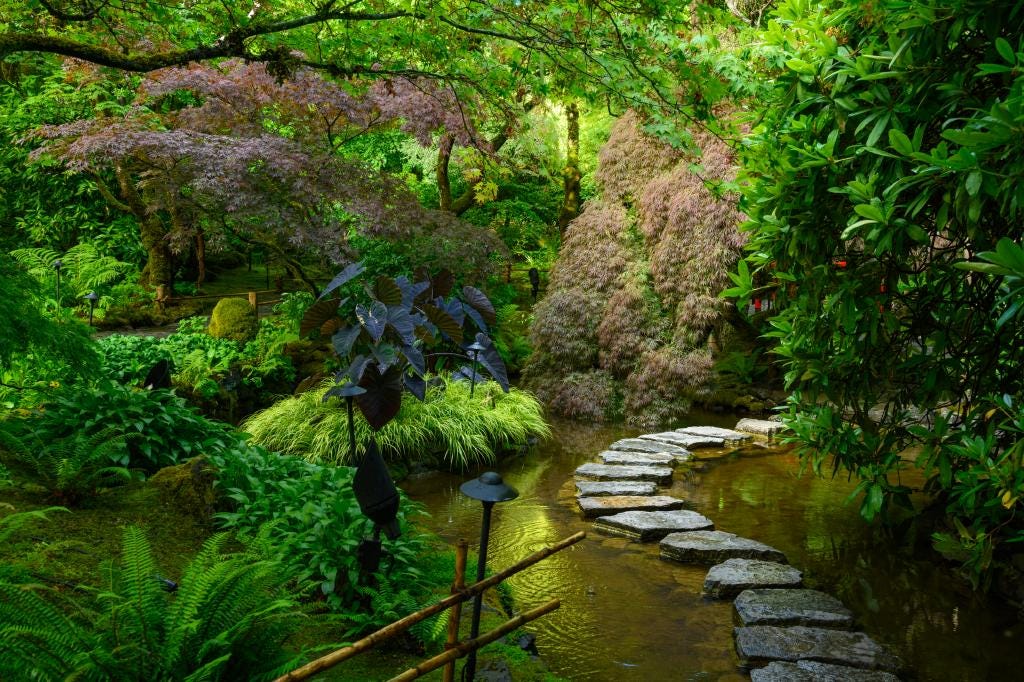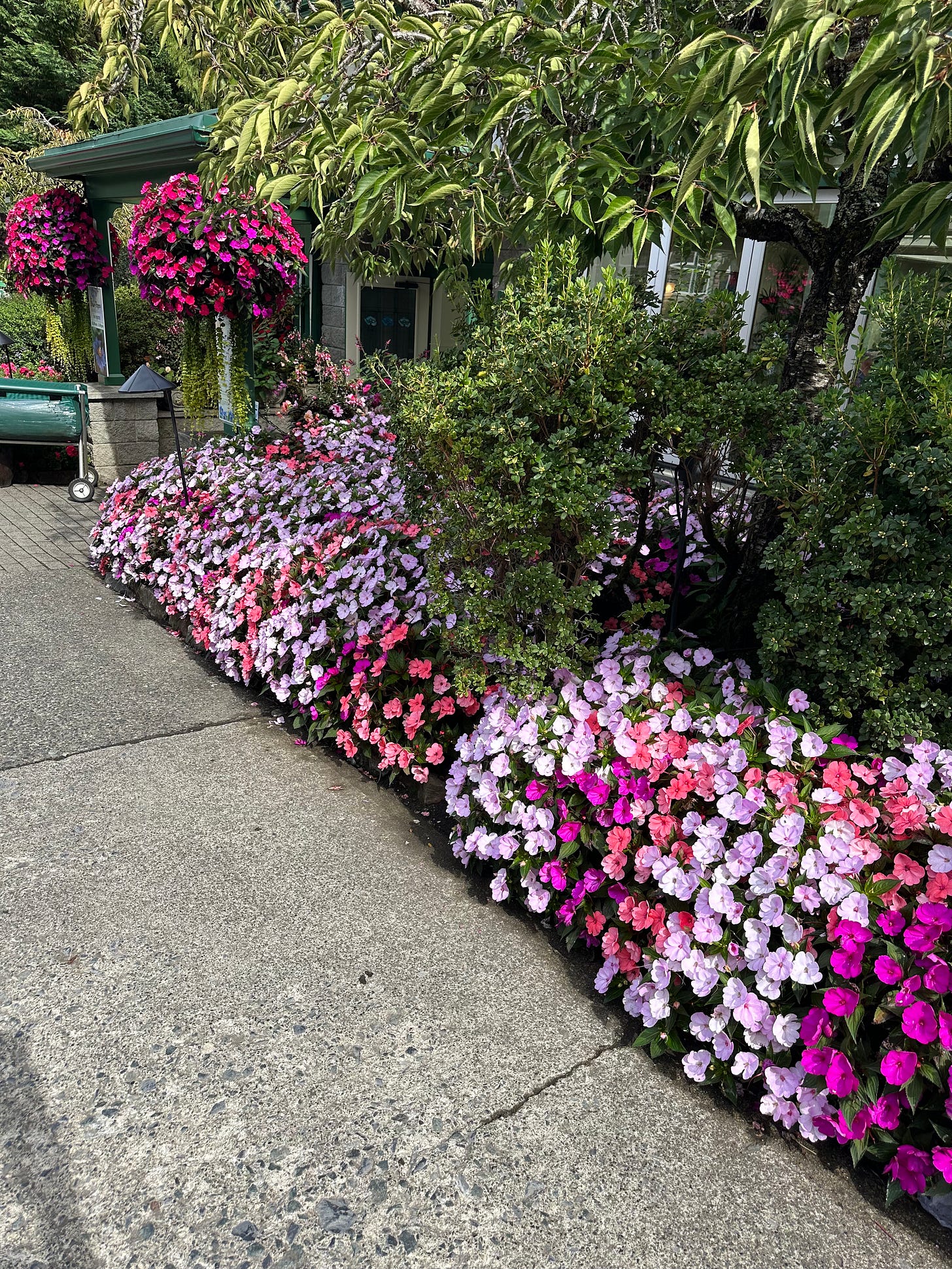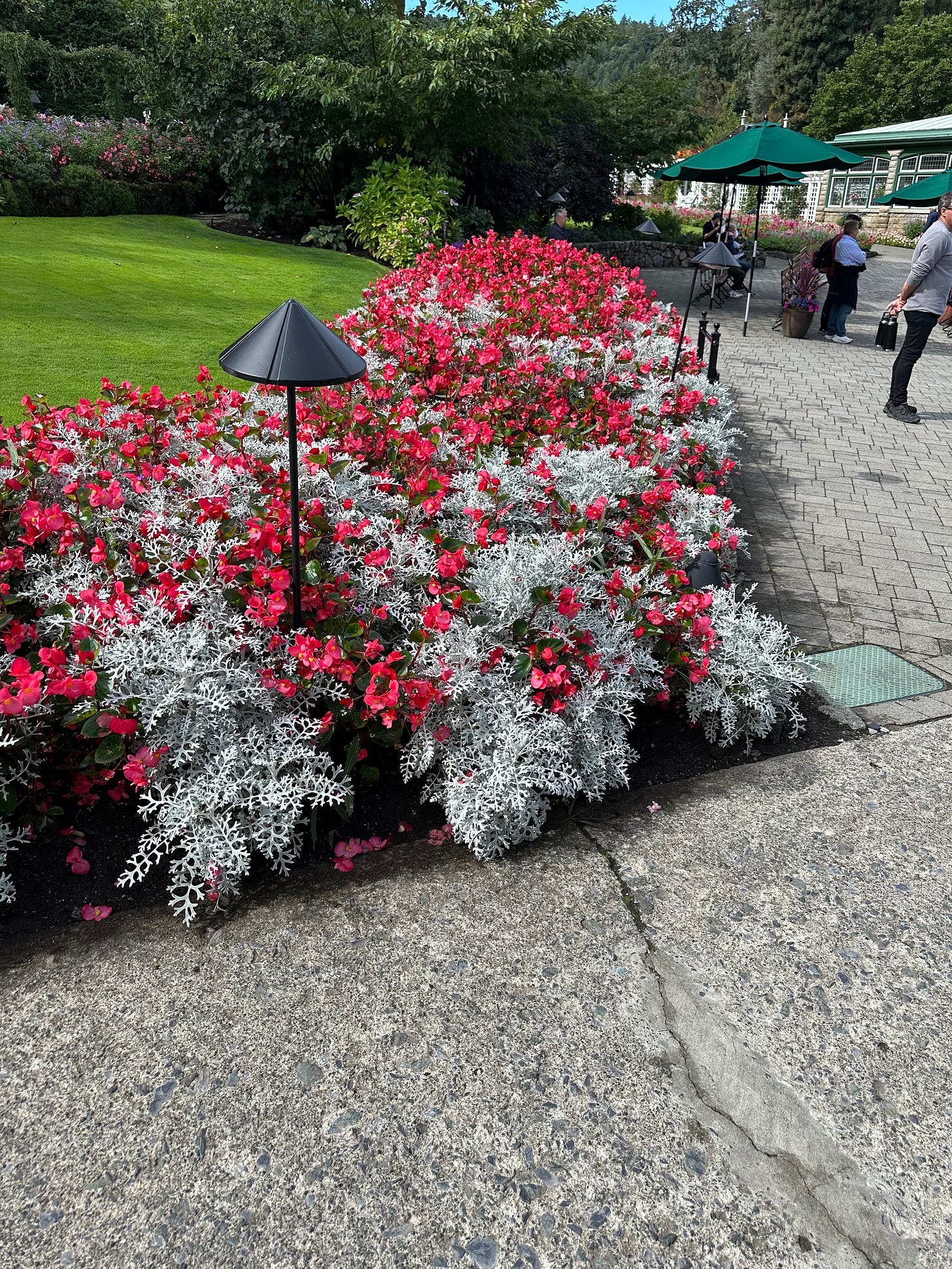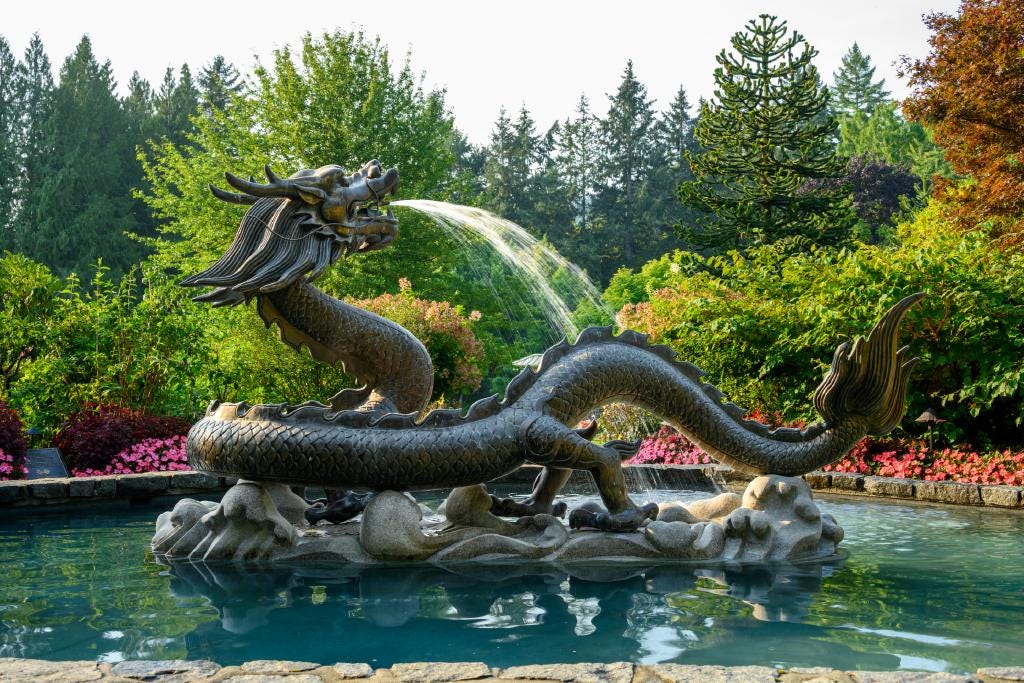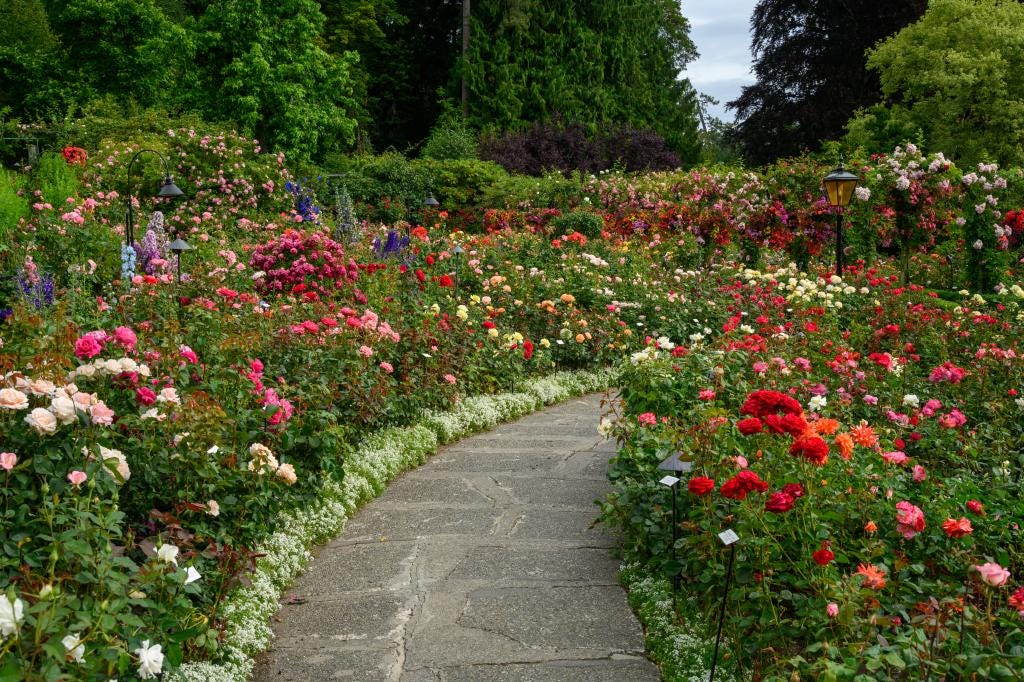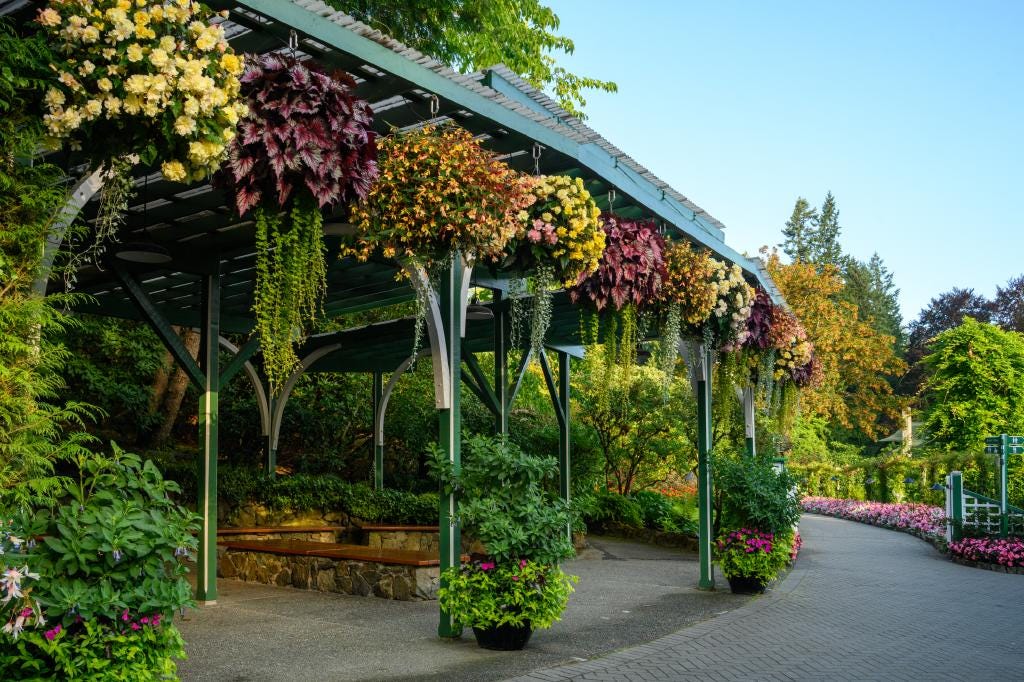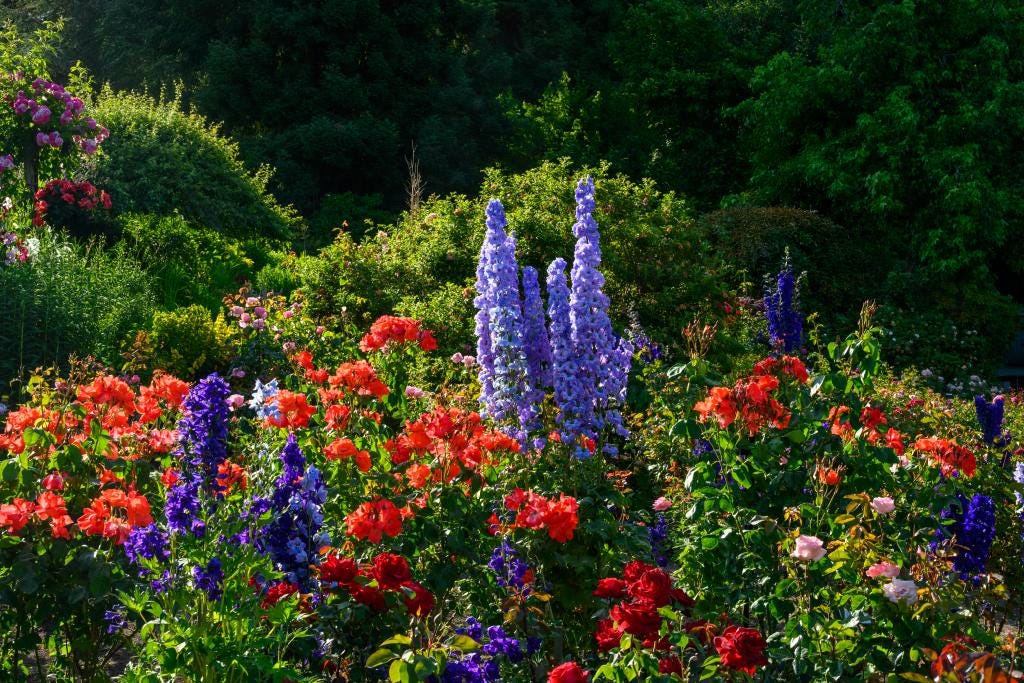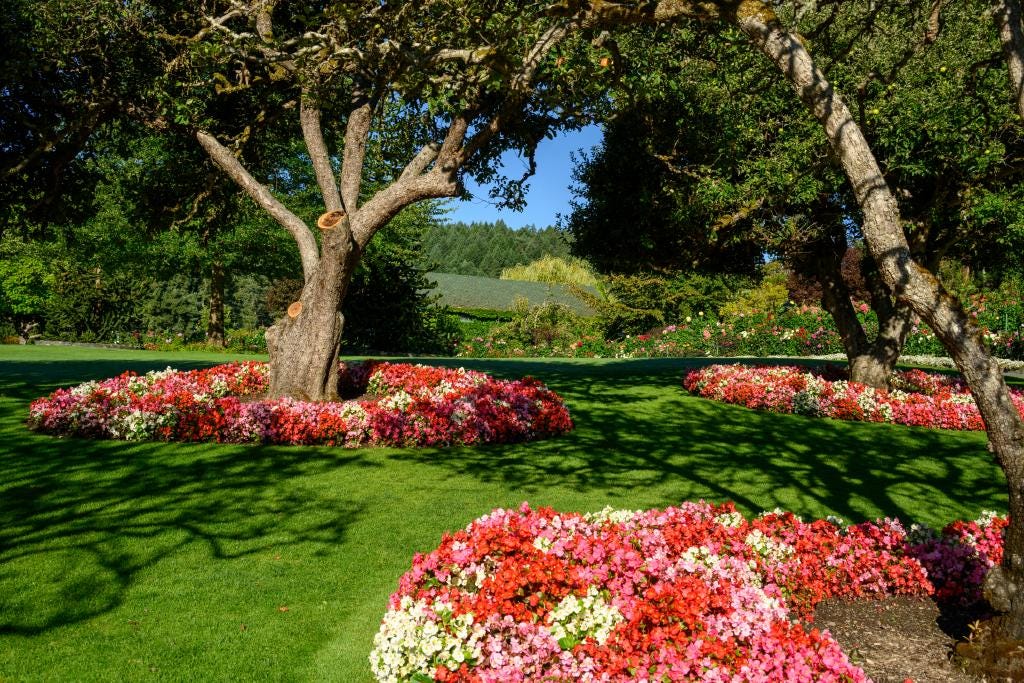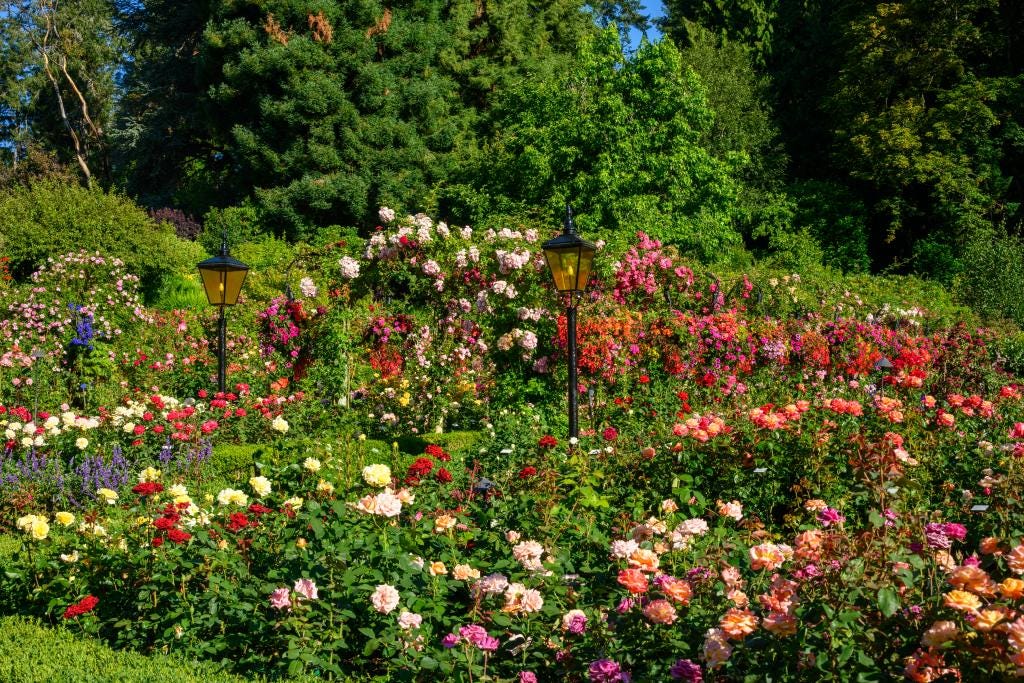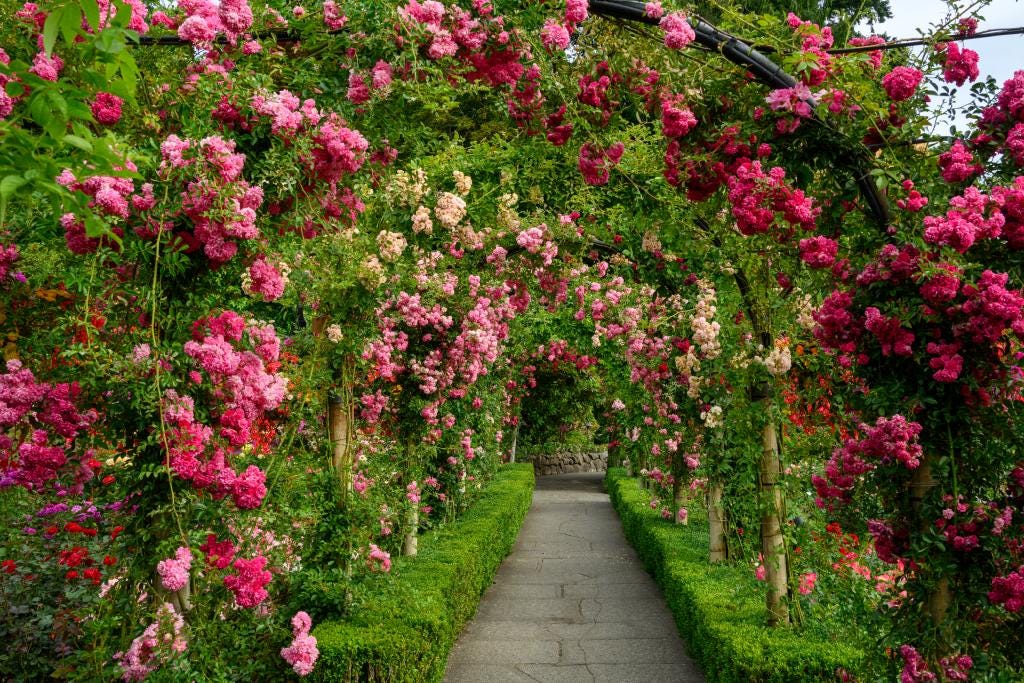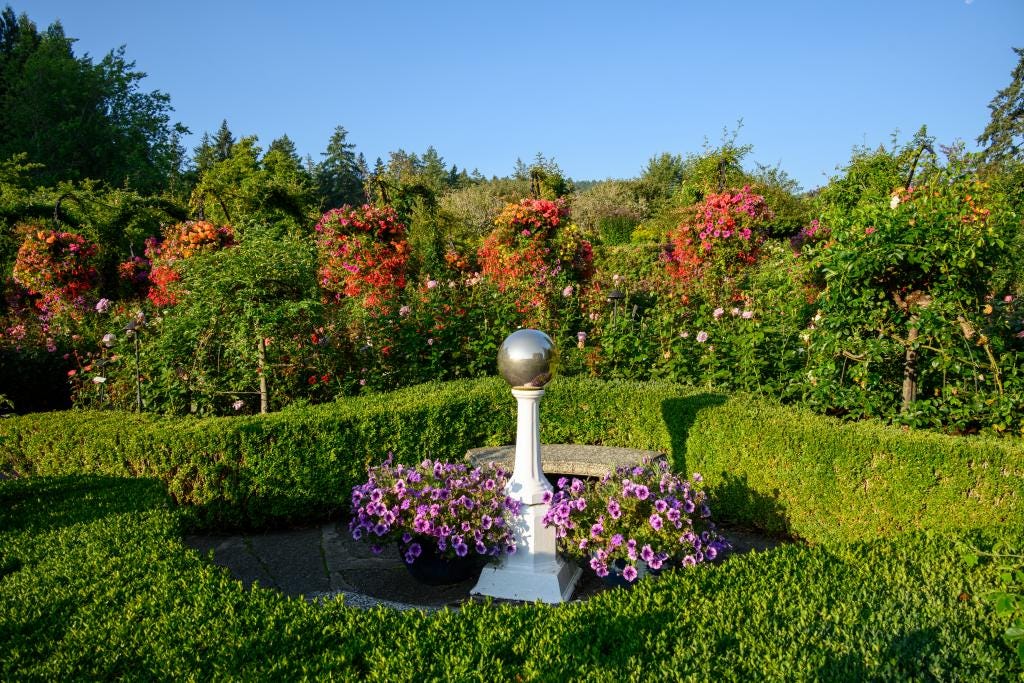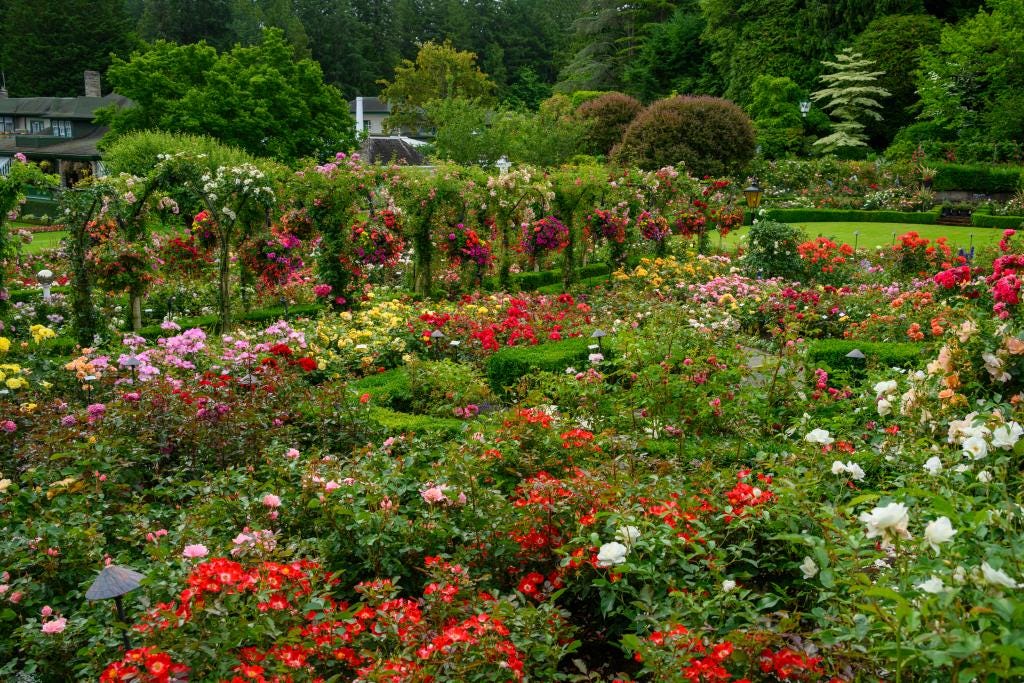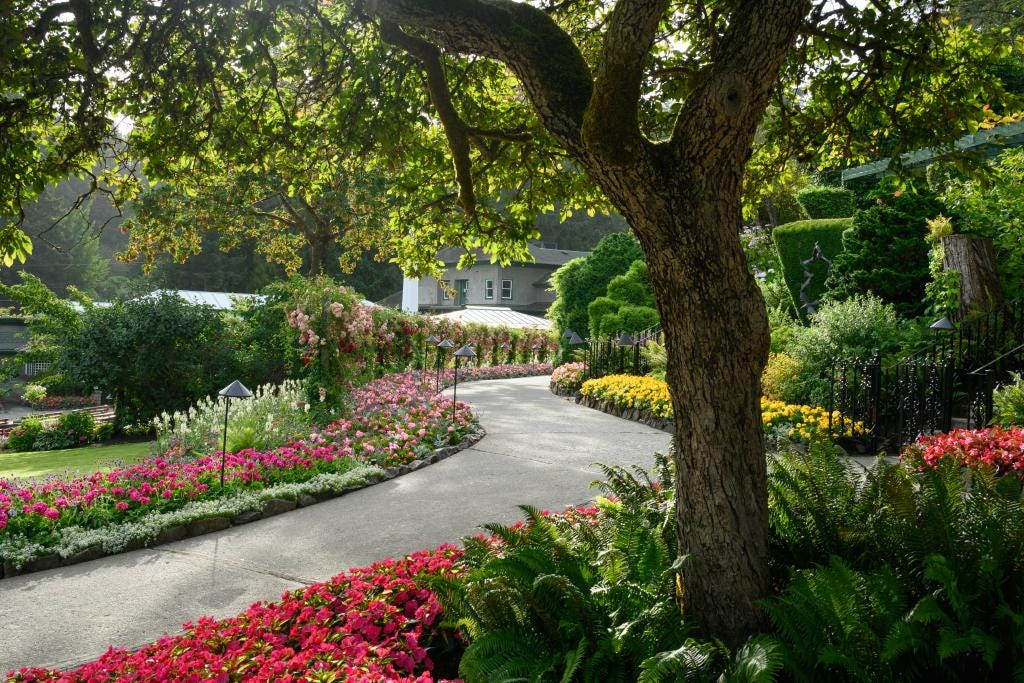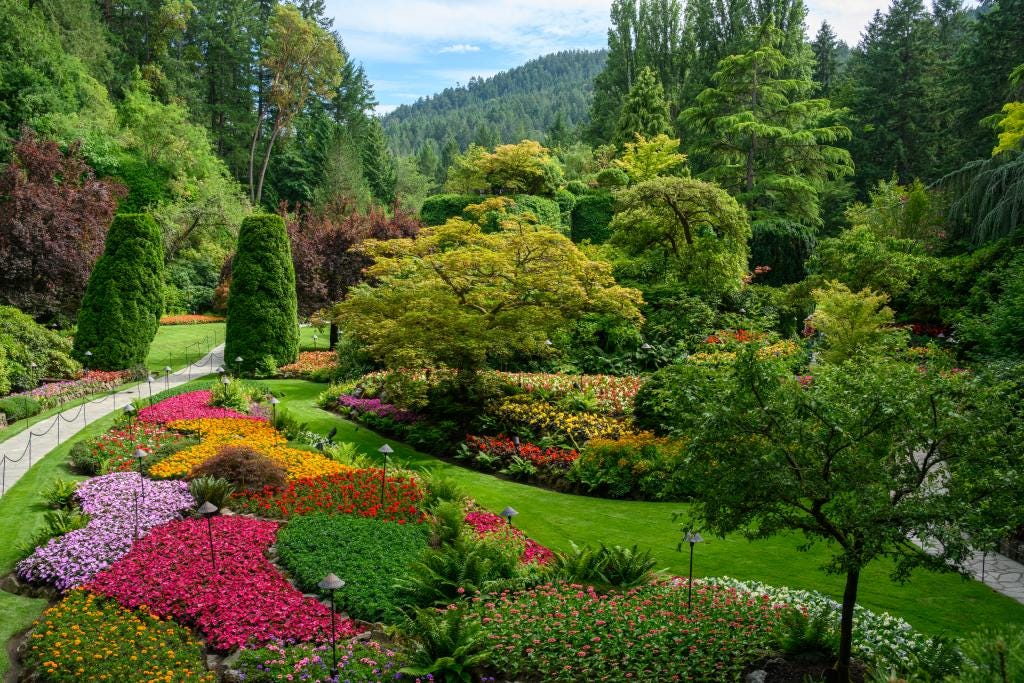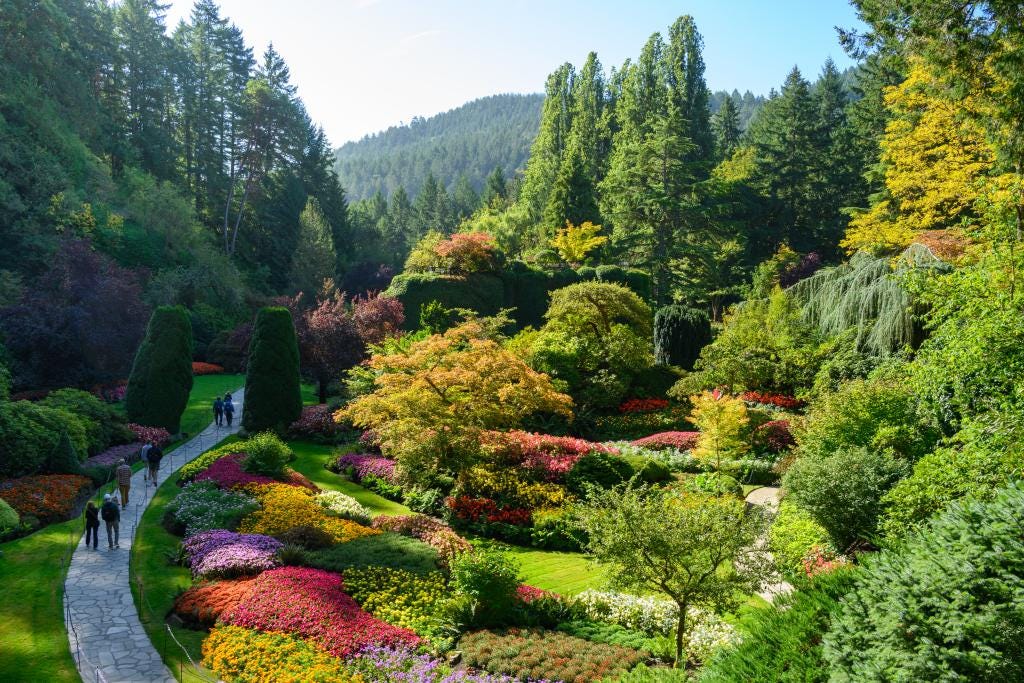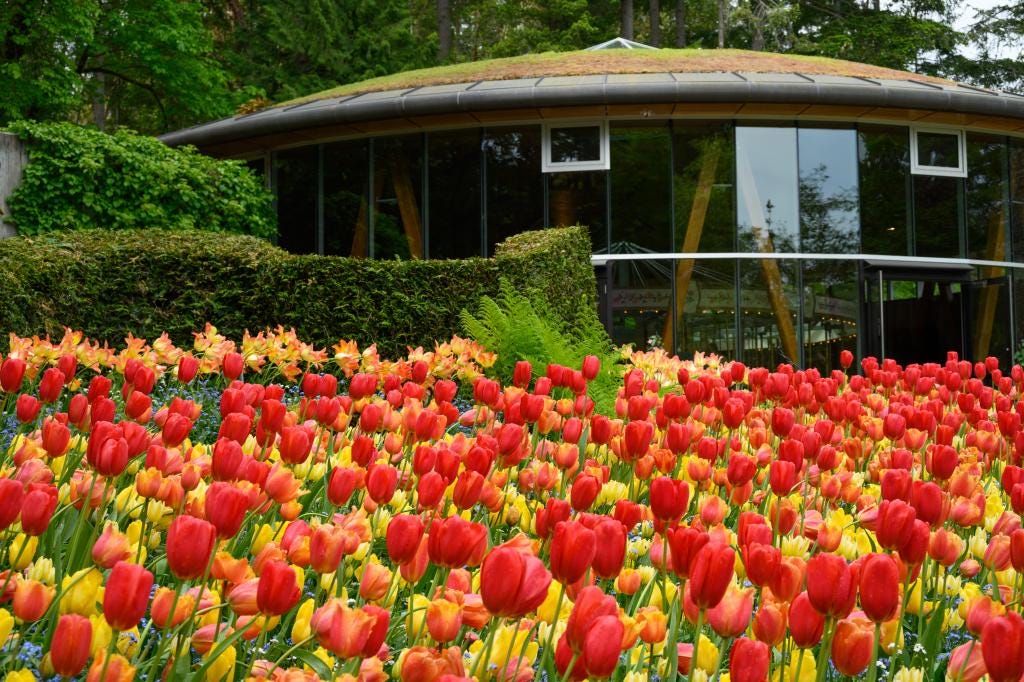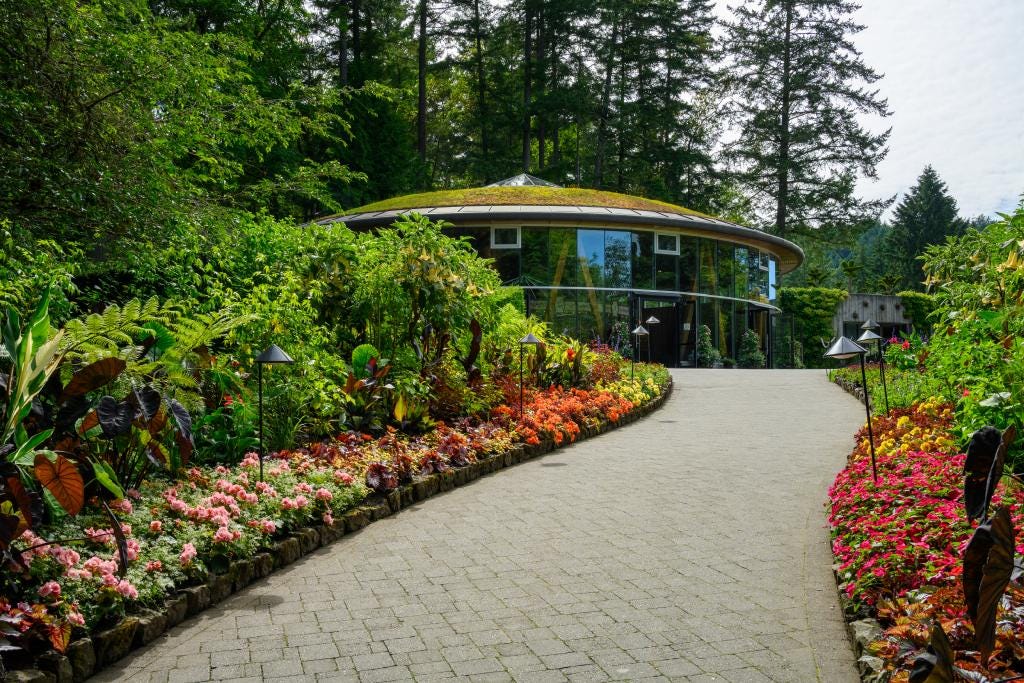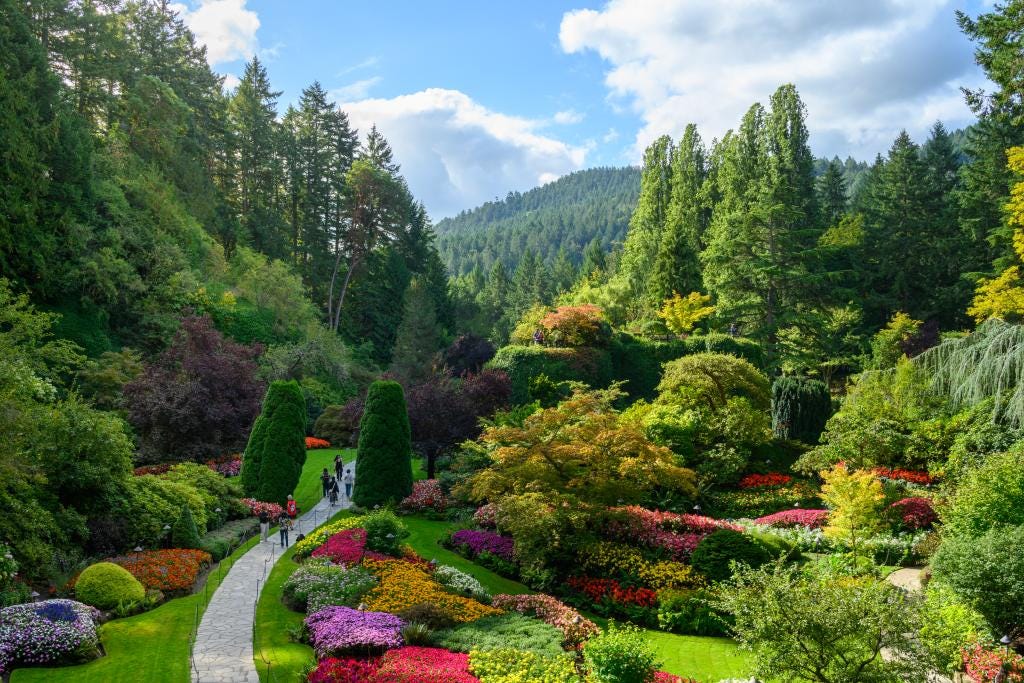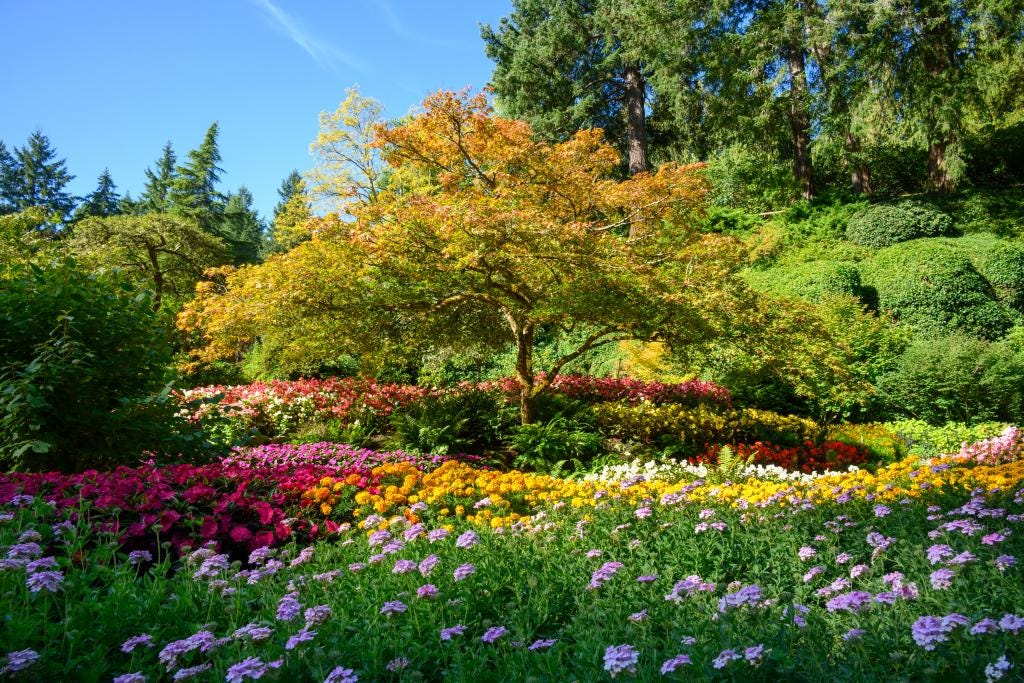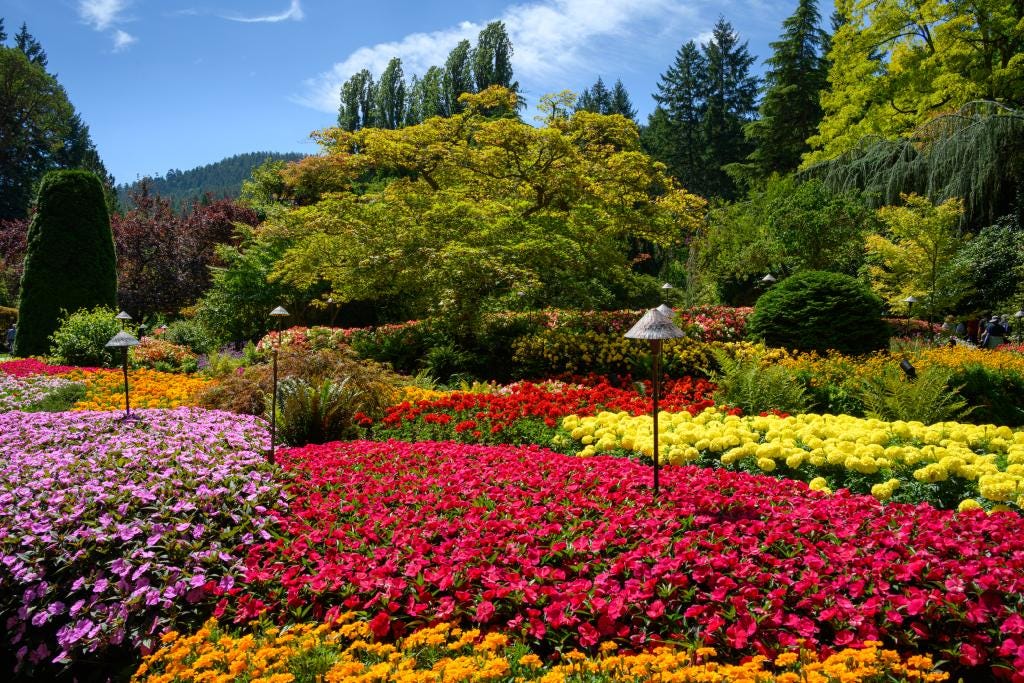Butchart Gardens: Turning a depleted rock quarry into solid gold
One woman's vision is now a worldwide sensation, visited annually by millions
BUTCHART GARDENS
BRENTWOOD BAY
VANCOUVER ISLAND
BRITISH COLUMBIA
As my Sweetheart, Shelley, and I spend the last day of our long 25th anniversary weekend on this magical Canadian island that is so dear to our hearts, a trip to the utterly stunning Butchart Gardens is a perfect grand finale.
The fact that these gardens, just 12 miles north of the British Columbia capital city of Victoria, continue to draw record crowds after more than 120 years of existence, gives me hope that the better side of human nature that treasures beauty and vision and hard work and an appreciation of the wonders of nature, will most definitely prevail over the deep divisions our world is currently experiencing.
I asked one of the 70 full-time gardeners on the site how to pronounce “Butchart” and was told it is simply butch-art. “Like Butch Cassidy,” she explained with a smile.
As it turns out, husband and wife Robert and Jennie Butchart came here in 1902 to purchase a rock quarry that led to the founding of the Vancouver Portland Cement Company.
There was no thought at the time - except maybe in the back of Jennie’s mind - that this would one day be declared a National Historic Site of Canada and a must-see attraction for visitors from around the world.
The first sacks of cement were shipped from Tod Inlet in 1905, about the time Jennie began planting flowers and shrubs around the Butcharts’ home near the cement plant.
By 1906 Jennie had already established an elaborate Japanese Garden with the help of landscape artist Isaboru Kishida, hired Hugh Lindsay as head gardener and began borrowing workers from Robert’s cement plant to assist her.
By 1908 the limestone supply from the quarry was exhausted and Jennie responded by planting Lombardy and white poplars along with Persian plums as a Sunken Garden in an attempt to hide the view of the cement plant.
By 1921 much of the Garden was completed and opened to the public every day of the year. It remains so today, except for a one-day closing on Christmas.
In 1931, Maclean’s Magazine described Butchart Gardens as “more than 20 acres in which every flower of the temperate zone grow their best, where anyone may wander at their leisure without encountering a ‘Keep Off the Grass’ or a ‘Do Not Pick the Flowers’ sign, where there is no police supervision and no red tape. No wonder it has become a mecca for tourists and all lovers of flowers.”
Just for the record, Butchart Gardens now covers 55 acres.
It has the exact same feeling today that Maclean’s described so long ago. We encountered families from seemingly every country on earth and heard dozens of languages being spoken. Best of all, the kids in attendance seemed as absolutely charmed with the beauty of this place as did their parents.
Although there were no magnificent flowers involved in one charming display, I loved the giant chess board that included the warning “CHILDREN MUST BE SUPERVISED BY AN ADULT AT ALL TIMES, so that they do not tip over, sit on or climb on the chess pieces.”
That warning made it unclear about what might tip over, the children or the chess pieces or the adults.
But it was a charming display nonetheless.
The Gardens have remained in the family throughout their long and splendid history, with Robert and Jennie’s great granddaughter Robin Lee Clarke now running the show.
In addition to the Japanese Garden and the Sunken Garden, there are now also the Rose Garden, the Italian Garden and the Mediterranean Garden, with dozens of surprises between one Garden and the next.
Grassy areas look like well-manicured putting greens, while a wide variety of trees tower over the site, making you feel as if you are walking through an explosion of color in the middle of a vast forest.
The talented crew of gardeners is constantly planting and replanting in response to the changing seasons, with over 900 varieties of flowers blooming at one time.
There are 280 varieties of roses, 191 varieties of tulips, 100 varieties of dahlias, 70 varieties of begonias, 50 varieties of Iris and 40 varieties of paeonia.
Plus my all-time favorite flower in the world, the Mophead Hydrangea.
Quite literally, there are millions of individual blossoms to enjoy, though no one has bothered to count them all.
Some are well known, others were a pleasant surprise. Together they are like a fine concert orchestra playing your favorite tunes.
There are Tiger Eye, Scotsman’s Purse, Crape Myrtle, African Daisy, Chilean Rhubarb, Crocus, Papyrus, Sweet Pea, Belladonna, Impatiens, Sweet Alyssum, Witch Hazel and Star Magnolia.
Not to mention Razzelberri, Forsythia, Ghost Tree, Seven-Son Flower, Lords and Ladies, Summer Snowflake, Ornamental Onion, Elephants Ear and a truly elegant Monkey Tree.
There are so many more, but I’ll let the wonderful photos generously shared by the Butchart Gardens staff tell the rest of the story.
Photos courtesy of the Butchart Gardens Ltd., Victoria, BC Canada
Reach me at bobdunning@thewaryone.com


